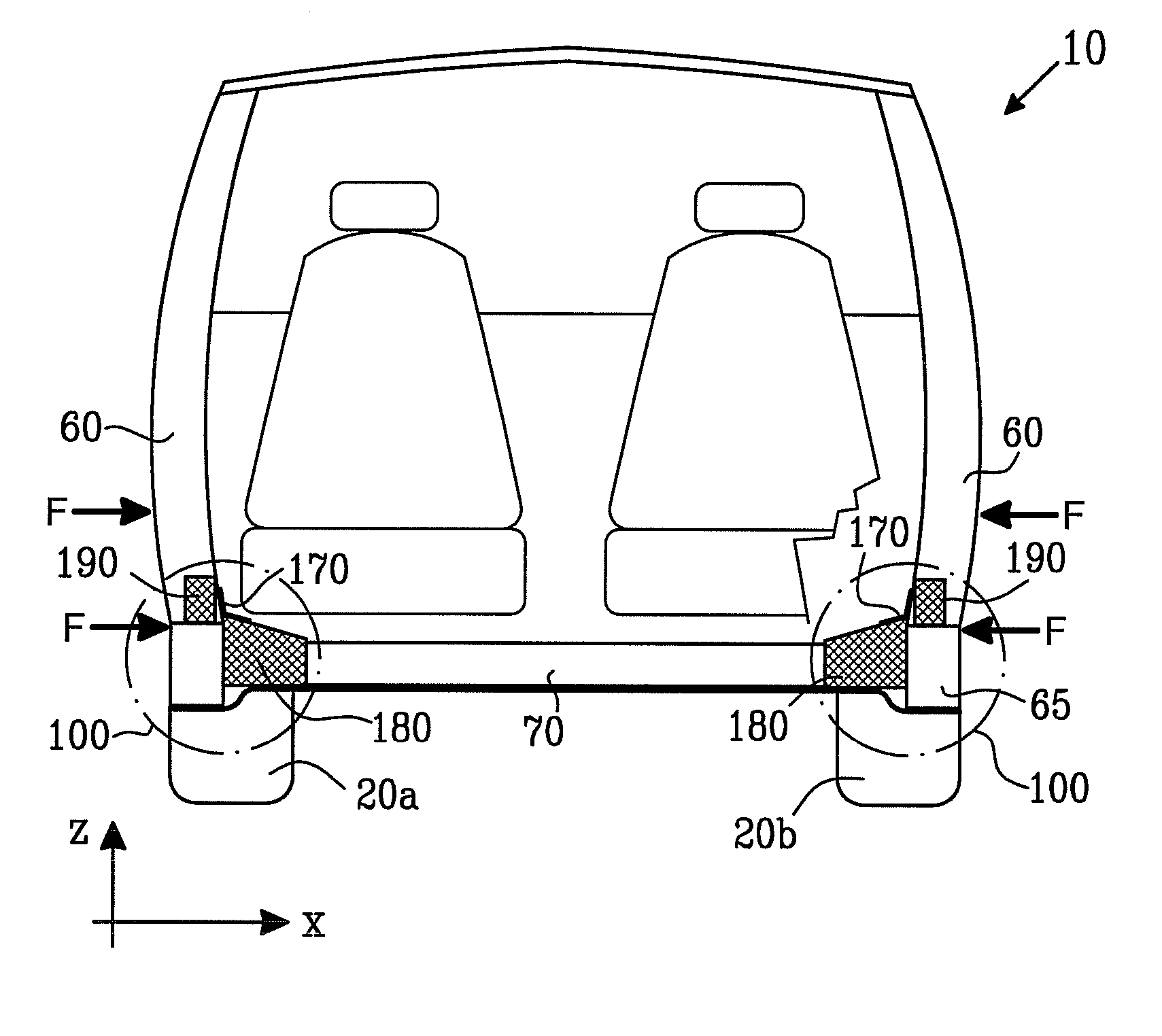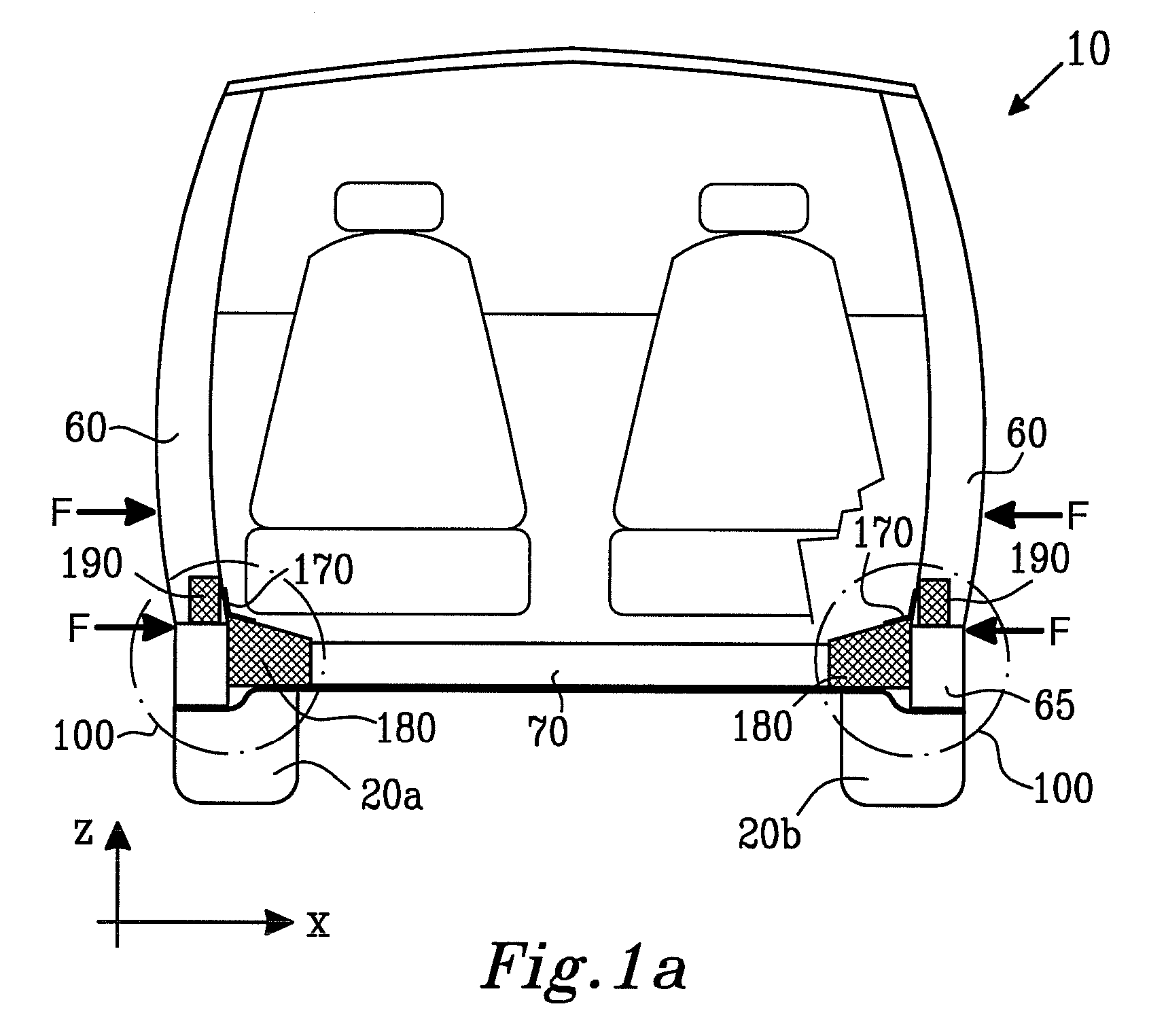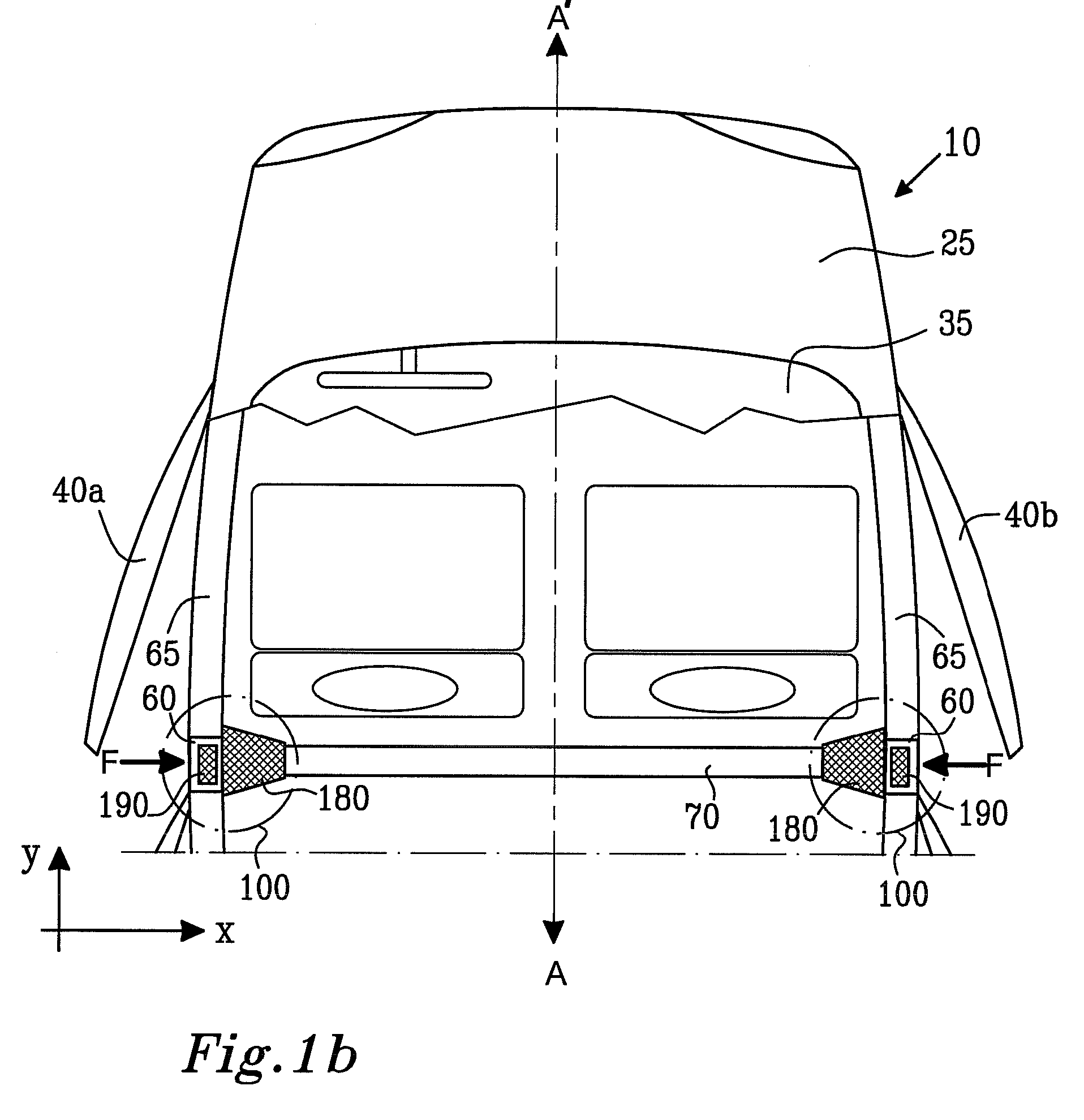Impact protection structure
a protection structure and impact technology, applied in the direction of roofs, bumpers, transportation and packaging, etc., can solve the problems of increasing personal safety, difficult optimization of vehicles to cope with lateral impacts, and insufficient space on the side of vehicles, so as to improve passenger and driver safety, improve side impact energy absorption, and increase kinetic energy
- Summary
- Abstract
- Description
- Claims
- Application Information
AI Technical Summary
Benefits of technology
Problems solved by technology
Method used
Image
Examples
Embodiment Construction
[0035]In order to provide contemporary vehicles with sufficient strength to withstand impacts and crashes at relatively higher vehicle speeds, it is conventional practice in vehicle design to employ strengthening sills and hollow elongate members in vehicle bodies. The hollow elongate members are fabricated from metal sheet which is folded and then welded during manufacture. Such hollow elongate members are not only of relatively lighter weight, but are axially strong and can, in worst case such as a severe crash, provide desirable crumpling characteristics when deformed; such crumpling is capable of absorbing impact kinetic energy. In advanced vehicle design, it is beneficial not only to include elongate strengthening members in an axial direction in a vehicle body, namely substantially aligned from a front end of the body to a rear end thereof, but also in a transverse direction so as to provide the vehicle with improved characteristics for coping with lateral impacts. Such transv...
PUM
| Property | Measurement | Unit |
|---|---|---|
| height | aaaaa | aaaaa |
| compressive strength | aaaaa | aaaaa |
| compressive strength | aaaaa | aaaaa |
Abstract
Description
Claims
Application Information
 Login to View More
Login to View More - R&D
- Intellectual Property
- Life Sciences
- Materials
- Tech Scout
- Unparalleled Data Quality
- Higher Quality Content
- 60% Fewer Hallucinations
Browse by: Latest US Patents, China's latest patents, Technical Efficacy Thesaurus, Application Domain, Technology Topic, Popular Technical Reports.
© 2025 PatSnap. All rights reserved.Legal|Privacy policy|Modern Slavery Act Transparency Statement|Sitemap|About US| Contact US: help@patsnap.com



